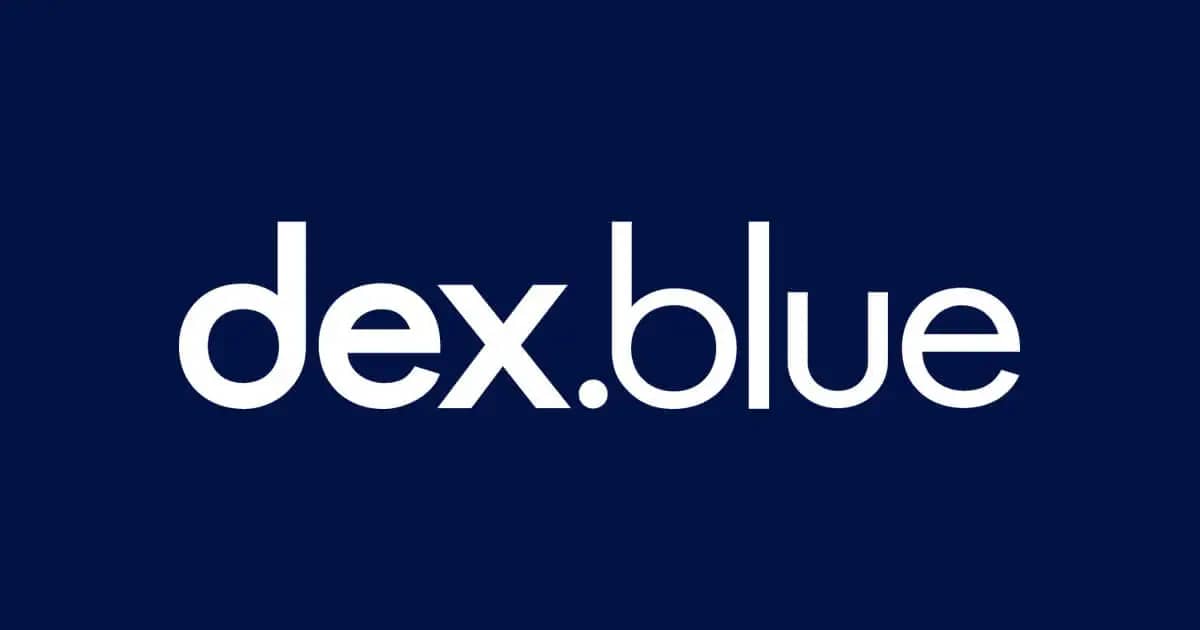위키 구독하기
Share wiki
Bookmark
DexBlue
DexBlue
덱스블루(Dex.Blue)는 이더리움 블록체인에서 토큰화된 자산의 신뢰할 수 있고 실시간 거래를 가능하게 하는 비보관 및 하이브리드 탈중앙화 거래소(DEX)입니다. 모든 유형의 트레이더를 위한 직관적이고 안전하며 고도로 기능적인 거래를 지원하기 위해 다양한 거래 기능과 도구를 제공합니다.[1]
역사
덱스블루는 2018년 독일 기업가 마그누스 힌켈과 라반 폰 슈피겔이 설립했습니다. 덱스블루는 에스토니아에 등록되어 있으며, 2019년 9월 12일에 서비스를 시작했습니다.[3]
개요
덱스블루는 이더리움 토큰의 실시간 거래를 제공합니다. 오프체인 주문 매칭과 온체인 에스크로 및 결제를 제공합니다. 자체 주문장 외에도 카이버 네트워크, 오아시스 및 유니스왑의 모든 유동성을 집계합니다.[2]
사용자는 메타마스크, 포트매틱, 토러스, 포티스와 같은 Web3 지갑과 레저 및 트레저와 같은 하드웨어 지갑 또는 거래 로그인 비밀번호 조합을 사용하여 덱스블루에 접속할 수 있습니다. 또한 사용자가 모바일 지갑도 연결할 수 있는 오픈소스 프로토콜인 'WalletConnect'를 지원합니다.[3]
기능
주문 유형
트레이더는 시장가, 지정가, 조건부 지정가 주문 등 다양한 주문 옵션을 사용할 수 있습니다. 또한 이더리움 페깅 페어뿐만 아니라 법정화폐 페깅 주문도 허용합니다.[3]
거래 수수료
입출금 수수료는 없지만 사용자는 이더리움 네트워크에 지불하는 사용자 정의 가스 수수료를 부담해야 합니다. 거래소는 메이커에게는 수수료를 부과하지 않지만 테이커에게는 30일 동안의 거래량(USD로 계산)에 따라 0.20%~0.25%의 수수료를 부과합니다. 또한 거래 결제를 위해 이더리움 네트워크에 지불하는 가스 수수료가 있습니다. 이 가스 수수료는 메이커와 테이커가 50:50으로 분담합니다.[4]
유동성 집계
유동성 집계는 덱스블루의 핵심 기능 중 하나입니다. 하이브리드 탈중앙화 주문장 거래소입니다. 자체 시장 유동성 외에도 카이버 네트워크, 오아시스 및 유니스왑과 같은 최고의 탈중앙화 거래소의 추가 유동성을 집계합니다. 덱스블루 주문장에는 특정 이더리움(ETH) 토큰에 대해 사용 가능한 유동성 소스의 결합된 유동성이 표시됩니다.[5]
덱스블루에서 거래할 때 시장가 주문은 사용 가능한 모든 유동성 소스에서 실행되며, 지정가 주문, 조건부 지정가 주문 또는 법정화폐 페깅 주문을 포함한 나머지 주문 유형은 사용자의 가격을 먼저 충족하는 유동성 소스에 대해 실행됩니다. 이는 단일 소스이거나 여러 소스의 조합일 수 있습니다. 이를 통해 사용자는 주문이 완전히 매칭될 때까지 단계별로 부분적으로 채워지도록 하여 0% 슬리피지로 대량 주문을 거래할 수 있습니다.[4][5]
상장 토큰
덱스블루는 ERC20 토큰 거래를 허용합니다. 이는 이더리움(ETH) 또는 다이(DAI)와 페어링됩니다. 현재 상장된 암호화폐 토큰은 아래 표에 나와 있습니다.
| ETH와 페어링 | DAI와 페어링 |
|---|---|
| 발란서(BAL) | BAT |
| 베이직 어텐션 토큰(BAT) | ETH |
| 컴파운드(COMP) | LEND |
| 그노시스(GNO) | LINK |
| 카이버 네트워크(KNC) | MKR |
| 에이브(LEND) | REP |
| 체인링크(LINK) | REN |
| 메이커(MKR) | SAI |
| 클레로스(PNK) | SNX |
| 어거(REP) | 랩트 비트코인(WBTC) |
| 렌(REN) | |
| SETH (sETH) | |
| 신세틱스(SNX) | |
| 텔러(TRB) | |
| UMA(UMA) |
보안 및 개인 정보 보호
탈중앙화된 특성으로 인해 덱스블루는 어떤 시점에서도 고객 자금을 관리하지 않습니다. 트레이더는 자금을 단독으로 관리할 수 있기 때문에 자금을 관리할 수 있는 유일한 주체입니다. 덱스블루 스마트 계약은 업그레이드할 수 없으므로 어떤 주체도 스마트 계약을 악의적으로 조작하여 모든 사용자의 자금을 위험에 빠뜨릴 수 없습니다. 운영 환경에 대한 모든 변경 사항은 면밀히 모니터링 및 검토됩니다. 팀의 핵심 개발자의 서명 없이는 변경이 불가능합니다.[3]
위임 서명 키
덱스블루는 '위임 서명 키'를 사용할 수 있도록 합니다. 즉, 사용자는 이더리움 블록체인에 등록된 다른 주소에서 지갑에 서명하여 거래를 할 수 있습니다. 즉, 사용자는 사용자 이름과 비밀번호로 로그인하여 어떤 장치에서든, 어떤 브라우저를 사용하든 주문을 할 수 있습니다. 자동화 또는 알고리즘 거래 도구를 사용하는 트레이더는 중앙화 거래소에서 API 키를 사용하고 핫 지갑으로 콜드 지갑 자금을 관리할 수 있습니다. 기관은 이 기능을 사용하여 자금 인출이 불가능한 트레이더의 하위 계정을 만들 수 있습니다.[1]
자금을 보유한 지갑(
잘못된 내용이 있나요?
